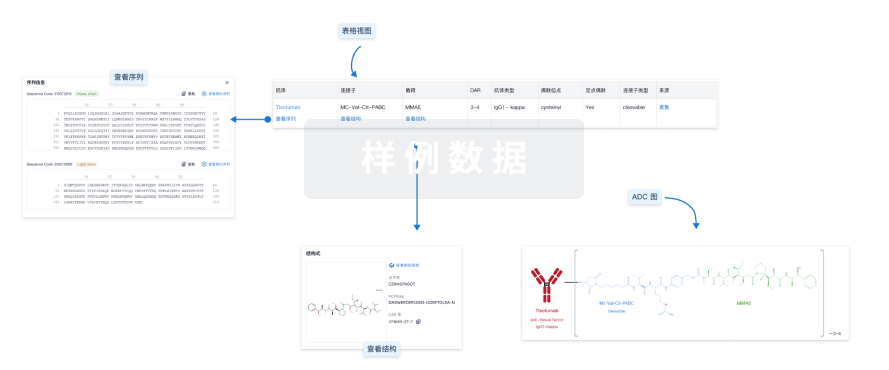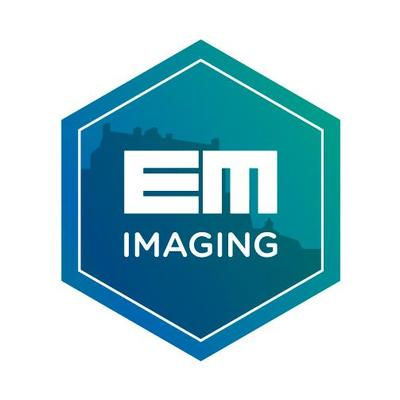预约演示
更新于:2025-06-28
EMI-137
更新于:2025-06-28
概要
基本信息
最高研发阶段临床1/2期 |
首次获批日期- |
最高研发阶段(中国)- |
特殊审评- |
登录后查看时间轴
结构/序列
使用我们的ADC技术数据为新药研发加速。
登录
或

Sequence Code 1277664502

来源: *****
关联
7
项与 EMI-137 相关的临床试验ISRCTN97555789
Investigation of novel molecular imaging techniques for precision surgery and genomic characterisation of high-risk prostate cancer using EMI-137
开始日期2019-10-22 |
申办/合作机构 |
NCT03470259
Detection of Thyroid Cancer and Central Lymph Node Metastases Using EMI-137 Enhanced Molecular Fluorescent Guided Imaging: a Multicentre Feasibility and
Almost 50 % of papillary thyroid cancer (PTC) patients have central lymph node metastases (CLNM), which are associated with a high risk of persistent or recurrent disease. However, the practice of performing a prophylactic central lymph node dissection (PCLND) routinely remains controversial. The proponents argue that without a PCLND, PTC patients with positive lymph nodes have an increased risk of local recurrence, and postponed node dissection leads to with 5-6 fold higher risk of morbidity. If performed, PCLND in clinical node negative patients increases staging to pN1 in more than 50% of the cases without increasing survival. The complication rate in PCLND is lower when compared to a technically challenging re-exploration in recurrent disease, with reported incidences of 0.6% and 7.3-20%, respectively. Opponents of routine PCLND point out the lack of randomized clinical trials and object to treatment-induced hypo-parathyroidism and recurrent nerve damage for the N0 patients. Currently, no diagnostic tool is available which reliably identifies these patient categories. Therefore, there is a clear need for novel diagnostic imaging modalities that overcome this issue. Molecular Fluorescence Guided Surgery (MFGS) is potentially such a diagnostic tool. The administration of NIR fluorescent tracers can increase detection accuracy of cancer and nodal metastatic tissue using macroscopic MFGS. Therefore, we aimed to identify a GMP-produced near infrared (NIR) tracer that potentially has a high target-to-background ratio in PTC compared to normal thyroid tissue. Tyrosine-protein kinase Met (c-Met) is significantly upregulated at the protein level in PTC compared to normal thyroid tissue. The investigators therefore hypothesize that the GMP-produced NIR-fluorescent tracer EMI-137 (targeting c-Met, peak emission at 675 nm range) might be useful for intraoperative imaging of PTC and nodal metastases. The investigators' aim is to investigate if the administration of EMI-137 is a feasible approach to detect PTC nodal metastases. Ultimately, this method might be useful to improve patient selection for CLND. Eventually, we might also be able to visualize multifocality, more selective lateral neck dissections and asses residual tissue after thyroidectomy. Ultimately, all of these strategies may reduce overtreatment, morbidity, and costs while maintaining the same or better effectiveness with a lower recurrence rate and improved quality of life.
开始日期2018-06-20 |
申办/合作机构 |
NCT03360461
Intraoperative Imaging of Colon Cancer Using a Fluorescent Peptide (EMI-137) Against the c-Met Receptor
EMI-137 in laparoscopic colonic resections is a single-centre stage IIa developmental study.
Ten adult participants with a diagnosis of colon adenocarcinoma undergoing laparoscopic colonic will be recruited to the trial. Participants will receive a single intravenous dose of the IMP - EMI-137 1 to 3 hours before surgery. The ability of EMI-137 to produce visible intra-operative fluorescence of primary colon cancer and lymph node metastases will be explored and evaluated.
Ten adult participants with a diagnosis of colon adenocarcinoma undergoing laparoscopic colonic will be recruited to the trial. Participants will receive a single intravenous dose of the IMP - EMI-137 1 to 3 hours before surgery. The ability of EMI-137 to produce visible intra-operative fluorescence of primary colon cancer and lymph node metastases will be explored and evaluated.
开始日期2018-02-14 |
申办/合作机构  University of Leeds University of Leeds [+1] |
100 项与 EMI-137 相关的临床结果
登录后查看更多信息
100 项与 EMI-137 相关的转化医学
登录后查看更多信息
100 项与 EMI-137 相关的专利(医药)
登录后查看更多信息
9
项与 EMI-137 相关的文献(医药)2024-07-01·European Journal of Nuclear Medicine and Molecular Imaging
MET-receptor targeted fluorescent imaging and spectroscopy to detect multifocal papillary thyroid cancer.
Article
作者: van Dam, Gooitzen M ; Jansen, Liesbeth ; Löwik, Clemens W G M ; Jonker, Pascal K C ; van Hemel, Bettien M ; Fehrmann, Rudolf S N ; Metman, Madelon J H ; van Ginhoven, Tessa M ; Coppes, Rob P ; Robinson, Dominic J ; Sywak, Mark S ; van Diest, Paul J ; Kruijff, Schelto ; Links, Thera P ; Nguyen, Anh H ; Gill, Anthony J ; Sondorp, Luc H J
Abstract:
Purpose:
Multifocal disease in PTC is associated with an increased recurrence rate. Multifocal disease (MD) is underdiagnosed with the current gold standard of pre-operative ultrasound staging. Here, we evaluate the use of EMI-137 targeted molecular fluorescence-guided imaging (MFGI) and spectroscopy as a tool for the intra-operative detection of uni- and multifocal papillary thyroid cancer (PTC) aiming to improve disease staging and treatment selection.
Methods:
A phase-1 study (NCT03470259) with EMI-137 was conducted to evaluate the possibility of detecting PTC using MFGI and quantitative fiber-optic spectroscopy.
Results:
Fourteen patients underwent hemi- or total thyroidectomy (TTX) after administration of 0.09 mg/kg (n = 1), 0.13 mg/kg (n = 8), or 0.18 mg/kg (n = 5) EMI-137. Both MFGI and spectroscopy could differentiate PTC from healthy thyroid tissue after administration of EMI-137, which binds selectively to MET in PTC. 0.13 mg/kg was the lowest dosage EMI-137 that allowed for differentiation between PTC and healthy thyroid tissue. The smallest PTC focus detected by MFGI was 1.4 mm. MFGI restaged 80% of patients from unifocal to multifocal PTC compared to ultrasound.
Conclusion:
EMI-137-guided MFGI and spectroscopy can be used to detect multifocal PTC. This may improve disease staging and treatment selection between hemi- and total thyroidectomy by better differentiation between unifocal and multifocal disease.
Trial registration:
NCT03470259
2022-08-01·European Journal of Nuclear Medicine and Molecular Imaging
Intraoperative MET-receptor targeted fluorescent imaging and spectroscopy for lymph node detection in papillary thyroid cancer: novel diagnostic tools for more selective central lymph node compartment dissection
Article
作者: van Hemel, Bettien M ; Jansen, Liesbeth ; Jonker, Pascal K C ; Löwik, Clemens W G M ; Fehrmann, Rudolf S N ; van Ginhoven, Tessa M ; Robinson, Dominic J ; van Dam, Gooitzen M ; Sywak, Mark S ; Metman, Madelon J H ; van Diest, Paul J ; Kruijff, Schelto ; Coppes, Robert P ; Nguyen, Anh H ; Links, Thera P ; Gill, Anthony J ; Sondorp, Luc H J
Purpose:
Patients undergoing prophylactic central compartment dissection (PCLND) for papillary thyroid cancer (PTC) are often overtreated. This study aimed to determine if molecular fluorescence-guided imaging (MFGI) and spectroscopy can be useful for detecting PTC nodal metastases (NM) and to identify negative central compartments intraoperatively.
Methods:
We used a data-driven prioritization strategy based on transcriptomic profiles of 97 primary PTCs and 80 normal thyroid tissues (NTT) to identify tumor-specific antigens for a clinically available near-infrared fluorescent tracer. Protein expression of the top prioritized antigen was immunohistochemically validated with a tissue microarray containing primary PTC (n = 741) and NTT (n = 108). Staining intensity was correlated with 10-year locoregional recurrence-free survival (LRFS). A phase 1 study (NCT03470259) with EMI-137, targeting MET, was conducted to evaluate safety, optimal dosage for detecting PTC NM with MFGI, feasibility of NM detection with quantitative fiber-optic spectroscopy, and selective binding of EMI-137 for MET.
Results:
MET was selected as the most promising antigen. A worse LRFS was observed in patients with positive versus negative MET staining (81.9% versus 93.2%; p = 0.02). In 19 patients, no adverse events related to EMI-137 occurred. 0.13 mg/kg EMI-137 was selected as optimal dosage for differentiating NM from normal lymph nodes using MFGI (p < 0.0001) and spectroscopy (p < 0.0001). MFGI identified 5/19 levels (26.3%) without NM. EMI-137 binds selectively to MET.
Conclusion:
MET is overexpressed in PTC and associated with increased locoregional recurrence rates. Perioperative administration of EMI-137 is safe and facilitates NM detection using MFGI and spectroscopy, potentially reducing the number of negative PCLNDs with more than 25%.
Clinical trial registration.:
NCT03470259.
2022-03-01·Surgical oncology3区 · 医学
A novel fluorescent c-met targeted imaging agent for intra-operative colonic tumour mapping: Translation from the laboratory into a clinical trial
3区 · 医学
Article
作者: Thomas A. Hughes ; Damian J. Tolan ; Jim P. Tiernan ; Mohammed I. Khot ; Tom I. Maisey ; Gemma R. Armstrong ; Sarah L. Perry ; Nick P. West ; David G. Jayne ; Christophe Portal
BACKGROUND:
The c-Met protein is overexpressed in many gastrointestinal cancers. We explored EMI-137, a novel c-Met targeting fluorescent probe, for application in fluorescence-guided colon surgery, in HT-29 colorectal cancer (CRC) cell line and an in vivo murine model.
METHODS:
HT-29 SiRNA transfection confirmed specificity of EMI-137 for c-Met. A HT-29 CRC xenograft model was developed in BALB/c mice, EMI-137 was injected and biodistribution analysed through in vivo fluorescent imaging. Nine patients, received a single intravenous EMI-137 bolus (0.13 mg/kg), 1-3 h before laparoscopic-assisted colon cancer surgery (NCT03360461). Tumour and LN fluorescence was assessed intraoperatively and correlated with c-Met expression in eight samples by immunohistochemistry.
FINDINGS:
c-Met expression HT-29 cells was silenced and imaged with EMI-137. Strong EMI-137 uptake in tumour xenografts was observed up to 6 h post-administration. At clinical trial, no serious adverse events related to EMI-137 were reported. Marked background fluorescence was observed in all participants, 4/9 showed increased tumour fluorescence over background; 5/9 had histological LN metastases; no fluorescent LN were detected intraoperatively. All primary tumours (8/8) and malignant LN (15/15) exhibited high c-Met protein expression.
INTERPRETATION:
EMI-137, binds specifically to the human c-Met protein, is safe, and with further refinement, shows potential for application in fluorescence-guided surgery.
100 项与 EMI-137 相关的药物交易
登录后查看更多信息
研发状态
10 条进展最快的记录, 后查看更多信息
登录
| 适应症 | 最高研发状态 | 国家/地区 | 公司 | 日期 |
|---|---|---|---|---|
| 阴茎肿瘤 | 临床2期 | 荷兰 | 2019-10-12 | |
| 舌肿瘤 | 临床2期 | 荷兰 | 2019-10-11 | |
| 结肠癌 | 临床2期 | 英国 | 2018-02-14 | |
| 乳腺癌 | 临床2期 | 英国 | - | 2015-11-13 |
| 结直肠癌 | 临床2期 | - | 2015-09-16 | |
| 肺癌 | 临床1期 | 英国 | 2019-10-02 | |
| 卵巢癌 | 临床1期 | 英国 | 2019-09-09 | |
| 前列腺癌 | 临床1期 | 英国 | 2019-09-09 | |
| 巴雷特食管 | 临床1期 | 荷兰 | - | |
| 甲状腺癌 | 临床1期 | 荷兰 | - |
登录后查看更多信息
临床结果
临床结果
适应症
分期
评价
查看全部结果
| 研究 | 分期 | 人群特征 | 评价人数 | 分组 | 结果 | 评价 | 发布日期 |
|---|
No Data | |||||||
登录后查看更多信息
转化医学
使用我们的转化医学数据加速您的研究。
登录
或

药物交易
使用我们的药物交易数据加速您的研究。
登录
或

核心专利
使用我们的核心专利数据促进您的研究。
登录
或

临床分析
紧跟全球注册中心的最新临床试验。
登录
或

批准
利用最新的监管批准信息加速您的研究。
登录
或

生物类似药
生物类似药在不同国家/地区的竞争态势。请注意临床1/2期并入临床2期,临床2/3期并入临床3期
登录
或

特殊审评
只需点击几下即可了解关键药物信息。
登录
或

Eureka LS:
全新生物医药AI Agent 覆盖科研全链路,让突破性发现快人一步
立即开始免费试用!
智慧芽新药情报库是智慧芽专为生命科学人士构建的基于AI的创新药情报平台,助您全方位提升您的研发与决策效率。
立即开始数据试用!
智慧芽新药库数据也通过智慧芽数据服务平台,以API或者数据包形式对外开放,助您更加充分利用智慧芽新药情报信息。
生物序列数据库
生物药研发创新
免费使用
化学结构数据库
小分子化药研发创新
免费使用





